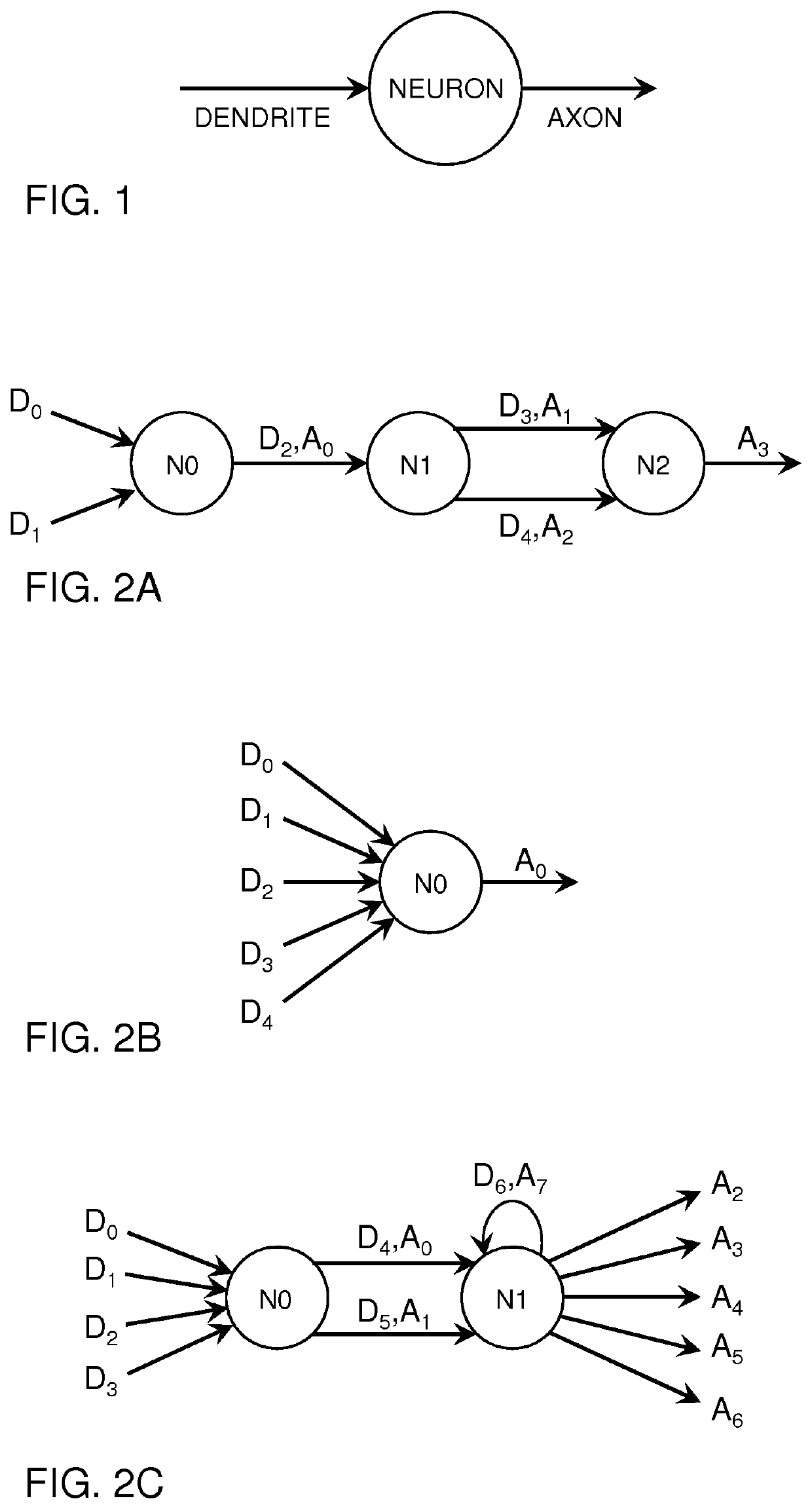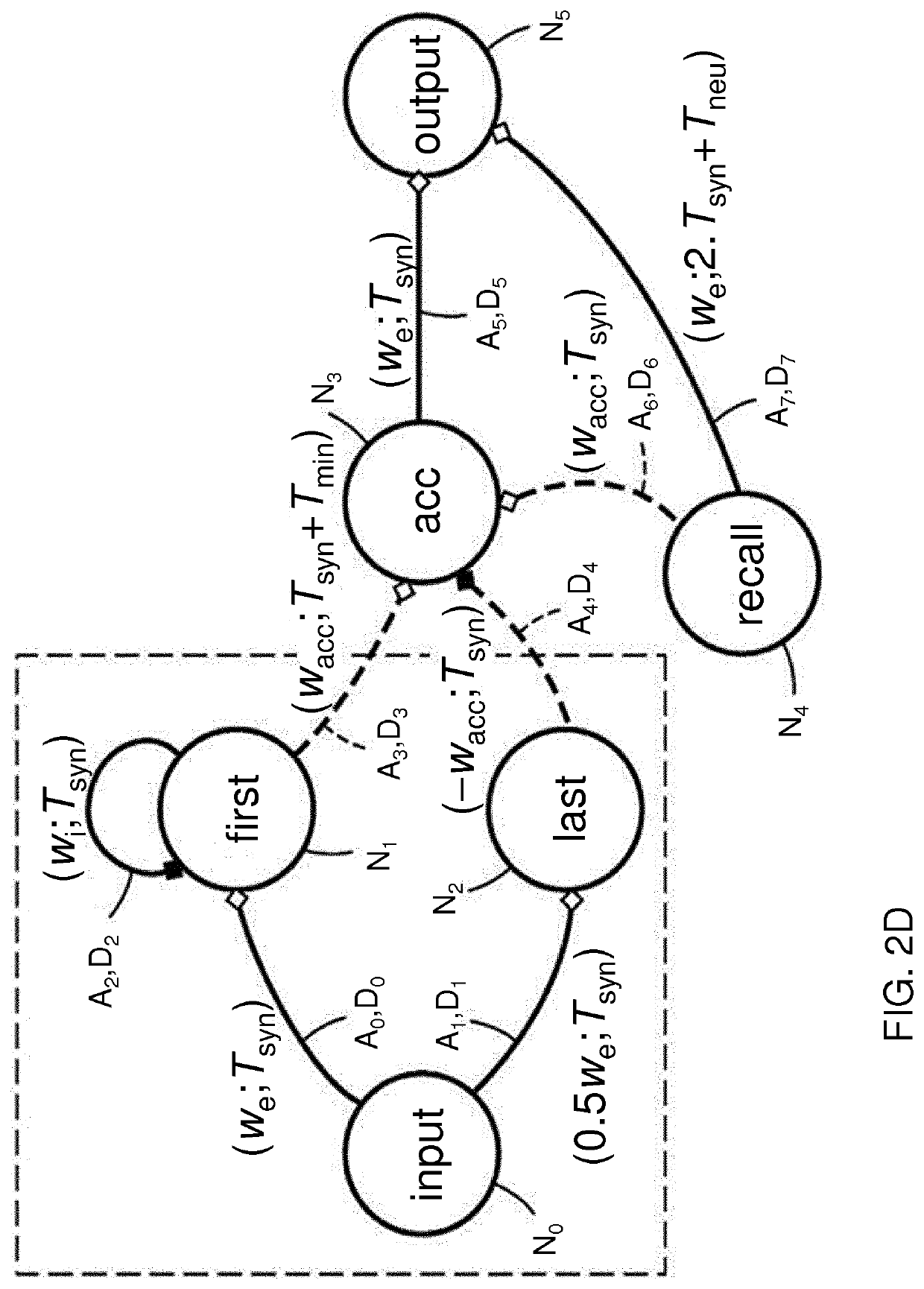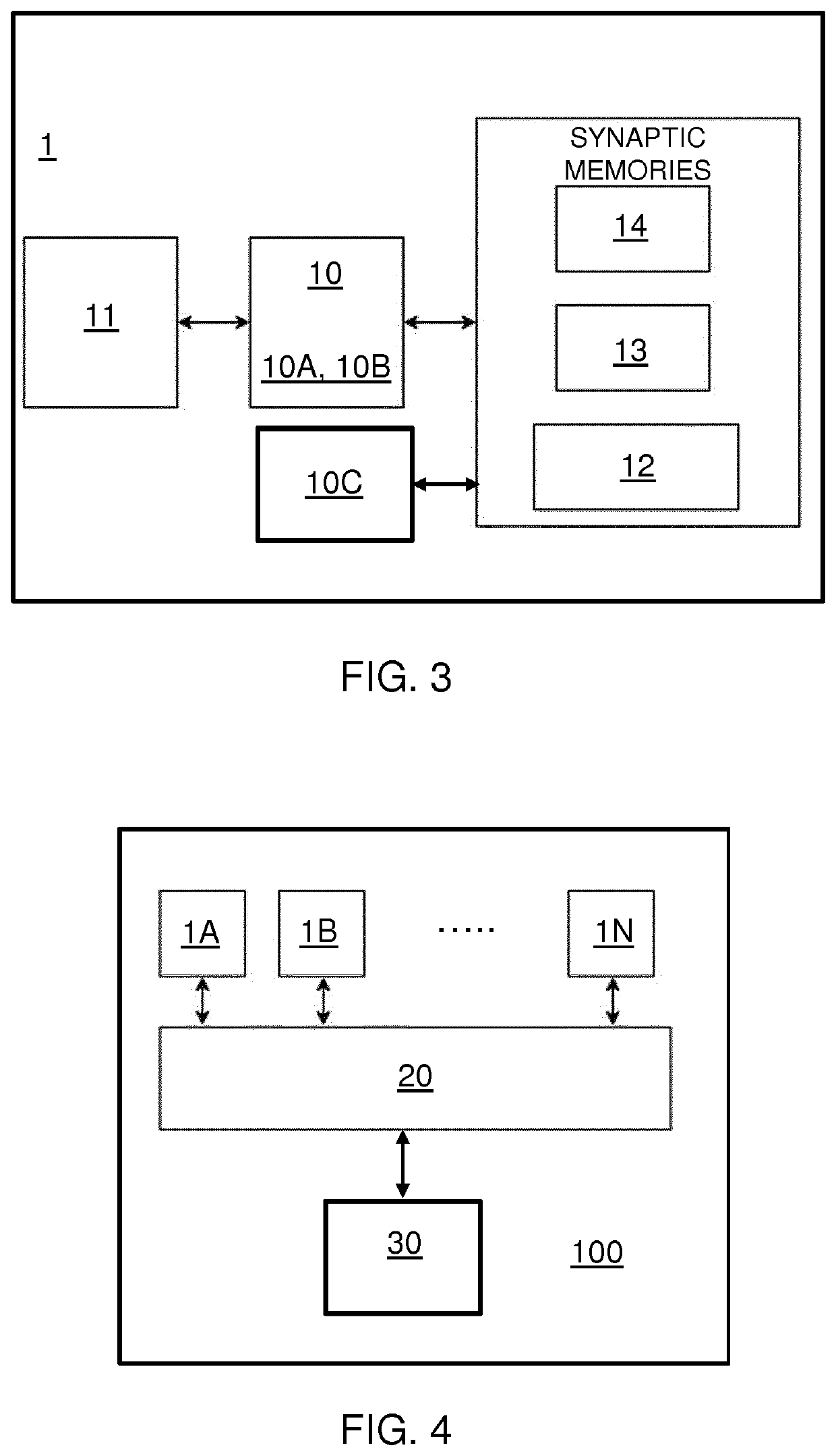Data processing module, data processing system and data processing method
a data processing module and data processing technology, applied in the field of data processing modules, data processing systems and data processing methods, can solve the problems of limiting the mapping ratio of neural units and their synapses, waste of resources and added power consumption, and design a processing module on silicon having properties compatible with biological systems that are still far from practical with state of the art technology, so as to enable more flexibility in modifying
- Summary
- Abstract
- Description
- Claims
- Application Information
AI Technical Summary
Benefits of technology
Problems solved by technology
Method used
Image
Examples
example i
[0054]By way of example an implementation of the network of FIG. 2A is described in more detail below. It is presumed that the memory units 12, 13, 14 are loaded before with the configuration information that defines the network topology.
Input Synapse Memory Unit (14)
[0055]This memory unit 14 specifies destination information. Each entry can be considered as specifying a specific incoming synapse (input synapse) of a particular neural unit in the data processing module. This includes synapses coming from another neural in the same data processing module but may also include synapses coming from a neural unit in another data processing module arranged in a message exchange network. In an embodiment each entry of the input synapse memory unit may comprise a first field with information specifying a weight of the synapse and a second field comprising an identifier for the neural unit being the owner of the synapse.
The contents of this memory unit and the way aspects of the network topo...
example-1
[0070]FIG. 2B shows an example data processing module with one neural unit N0, five input synapse synapses (D0, . . . , D4) and one output synapse A0. The tables below show the mapping of this example network onto the synaptic memories in the manner explained in detail in sections above. Unused locations are indicated with the symbol X.
TABLE 5Input synapse memory unit 14Input Synapse ID(Depth = 10)Neural unit IDSynaptic WeightD0N0W0D1N0W1D2N0W2D3N0W3D4N0W4XXXXXXXXX
TABLE 6Output synapse memory unit 13Output synapse ID(depth = 10)Synaptic DelayDestination IDInput synapse IDA0T0NEyDyXXXXXXXX
TABLE 7Output synapse slice memory unitNeural unit IDOffsetOutput synapse countN001XXXXXX
example-2
[0071]FIG. 2C shows an example with two neural units N0,N1, seven input synapses (D0, . . . , D6) and eight output synapses (A0, A1, . . . , A7). The tables below show the mapping of this example network onto the synaptic memories in the manner explained in detail in sections above.
TABLE 8Input synapse memory unitInput SynapseIDNeural unit IDSynaptic WeightD0N0W0D1N0W1D2N0W2D3N0W3D4N1W4D5N1W5D6N1W6XXXXXXXXX
TABLE 9Output synapse memory unitOutputSynapticDestinationInputsynapse IDDelayIDsynapse IDA0T0NExD4A1T1NExD5A2T2NEyDyaA3T3NEyDybA4T4NEyDycA5T5NEyDydA6T6NEyDyeA7T7NExD6XXXXXXXX
TABLE 10output synapse slice memory unitNeural unit IDOffsetOutput synapse countN002N126XXX
PUM
 Login to View More
Login to View More Abstract
Description
Claims
Application Information
 Login to View More
Login to View More - R&D
- Intellectual Property
- Life Sciences
- Materials
- Tech Scout
- Unparalleled Data Quality
- Higher Quality Content
- 60% Fewer Hallucinations
Browse by: Latest US Patents, China's latest patents, Technical Efficacy Thesaurus, Application Domain, Technology Topic, Popular Technical Reports.
© 2025 PatSnap. All rights reserved.Legal|Privacy policy|Modern Slavery Act Transparency Statement|Sitemap|About US| Contact US: help@patsnap.com



